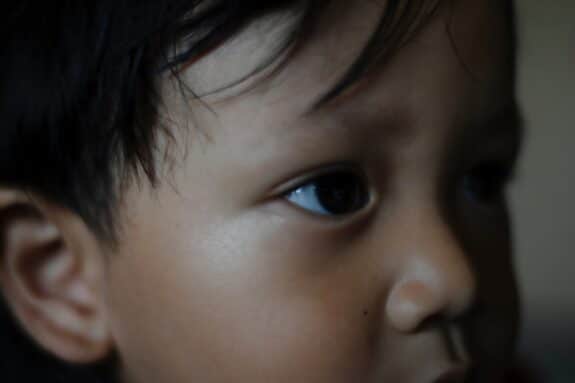The Centers for Disease Control and Prevention (CDC) estimates that nearly 3% of all children in the United States are diagnosed with autism. However, there is hope on the horizon for faster diagnoses, thanks to a collaborative team of researchers at Indiana University and Purdue University. They are pioneering methods to diagnose autism sooner, which is important as early interventions can make a significant difference.
Rebecca McNally Keehn, Ph.D., assistant professor of pediatrics at the IU School of Medicine, emphasizes the current challenge: “The number of children needing autism evaluations exceeds the capacity of specialists trained to provide this service. Children and their families are currently waiting a year or more to access evaluations, missing opportunities for interventions at the optimal time of impact.”
In a study recently published in JAMA Network Open, McNally Keehn and her team explored using eye-tracking biomarkers to diagnose autism in primary care clinics across Indiana. The team evaluated 146 children aged 14-48 months, visiting practices involved in the Indiana Early Autism Evaluation Hub system.
Eye-tracking biomarkers are a promising diagnostic tool. They measure social and nonsocial attention and brain function, differentiating children with autism from those with other neurodevelopmental disabilities. Despite significant investments in discovering these biomarkers, their clinical application has lagged. During the study, children watched videos on a computer screen while researchers recorded their eye movements and pupil size. Combining primary care clinician diagnosis with eye-tracking data resulted in a model with 91% sensitivity and 87% specificity, leading to more accurate autism diagnoses.
“This approach can address delays in access to autism evaluations by equipping primary care clinicians with a multi-method diagnostic approach,” McNally Keehn explains. “This is a public health issue, and our approach has the potential to substantially improve access to timely, accurate diagnosis in local communities.”
The research team’s next steps include a large-scale replication and validation study using artificial intelligence. They also aim to conduct a clinical trial to test the effectiveness of their diagnostic model in real-time primary care settings.
In December 2023, a team from the University of Southern California (USC) also made strides in autism detection. They used artificial intelligence to analyze data from an iPad coloring game. The study, published in the Journal of Autism and Developmental Disorders, demonstrated the potential of this novel method. By examining factors such as pressure and movement velocity during a five-minute coloring game played by 54 children aged 8 to 17, the AI accurately distinguished between typically developing children and those with autism with 76% accuracy. It also identified developmental coordination disorder, which often overlaps with autism, with notable accuracy.
While the USC study focused on high-functioning children and adolescents and requires further validation, it underscores the importance of early identification and tailored therapeutic approaches for better long-term outcomes for children with autism.
Together, these innovative research efforts offer hope for quicker, more accurate autism diagnoses, paving the way for timely interventions that can make a world of difference for children and their families.
More Autism News:







